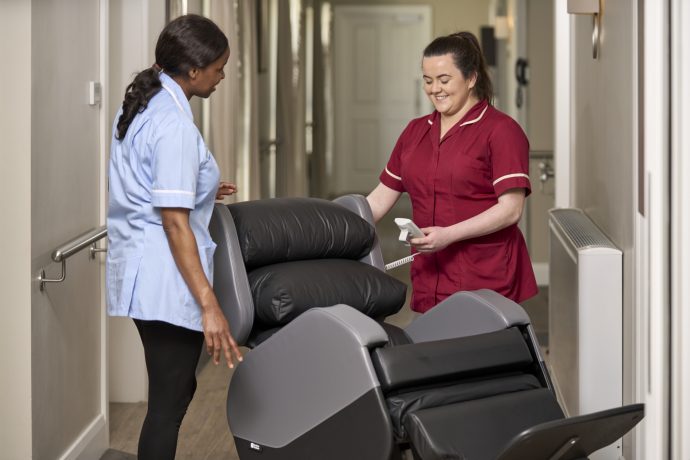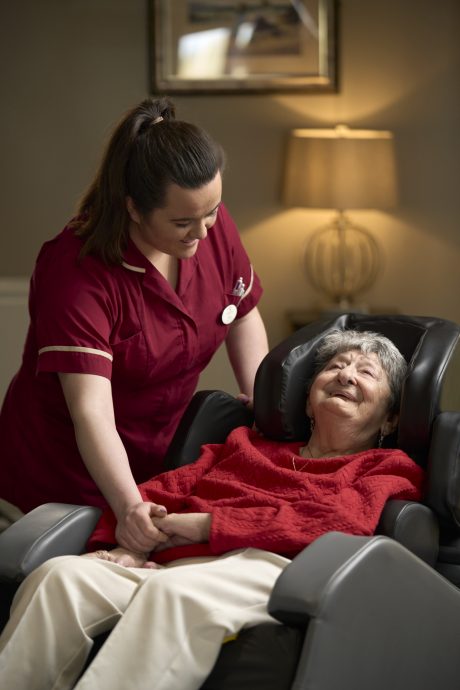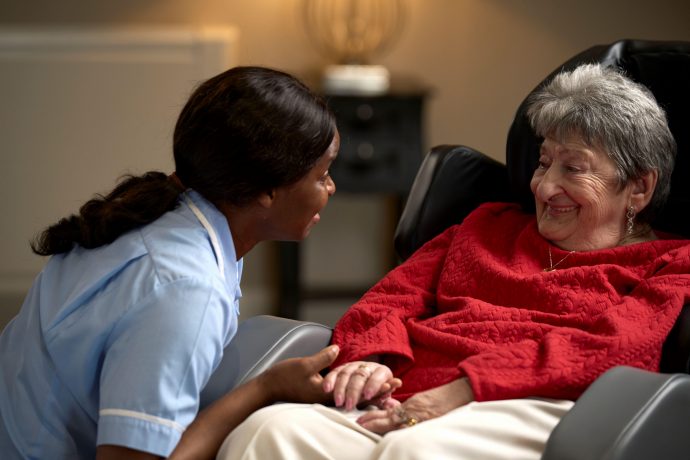
2nd September 2025


Let our online product finder guide you through our simple steps to choose the chairs that best meet your patient’s needs.
Seating Solution FinderThe Envelo cushion provides excellent pressure redistribution and comes as standard on all Seating Matters chairs, meeting the clinical needs of most clients.
Explore Envelo RangeSeating Matters specialises in clinical, therapeutic seating solutions designed to improve patient care and safety, offering products for pressure injury prevention, postural support, and mobility assistance in healthcare settings.
Learn MoreDiscover how Seating Matters has transformed lives with our innovative seating solutions - read our inspiring customer success stories now!
Customer StoriesUsed in academia, in clinical practice and with caregivers around the world to guide their practices around specialist seating.
Download Free Handbook

We’ve discovered from speaking to clinicians, physiotherapists, nurses and occupational therapists across the world during training sessions and at industry shows, that there is an increasing need for guidance and support when dealing with people of size who have low mobility. There is currently a lack of both proper equipment to optimise postural support and pressure redistribution, and understanding of how to best treat this patient category.
The most common challenge for clinicians in seating people of size, is in getting the measurements of the patient correct. This can be often a daunting task and clinicians might require extra help from another clinician to make sure the measurements are as accurate as possible. Other Common Issues to Seating people of size are,
1. Not Accommodating the Gluteal Shelf
Unlike most patients, the gluteal shelf or bulbous gluteal region in people of sizes, makes it more difficult to give these patients the full back support that they need. The extra tissue in the posterior lumbar region often forces patients to sit forward in their chair, which leaves their back unsupported.
2. Incorrect Seat Depth and Seat Height
A patient is more at risk of developing pressure ulcers in interface areas if the seat is not making maximum contact to load the body. Improper loading can lead to an uneven distribution of weight on interface areas. The seat depth and seat height needs to be adjusted to match the patients’ leg length but must be at an appropriate length so as to avoid pulling the patient forward and into a sacral sitting position.
3. No Footplates
On the few bariatric chairs that do have tilt in space, they often do not come with appropriate footplates. Approximately 19% of a person’s weight is exerted through the feet in sitting, a key area prone to pressure ulcer development. However, with people of size, this percentage can be greater due to the weight of the abdomen resting on the legs. When chairs do not have footplates and are reclined or titled, you are actually increasing the interface pressure instead of decreasing the pressure the patient experiences.
4. Not Accommodating Calves
The correct leg rest and calf pad is an important function to consider in seating people of size. With larger calves, there is often increased risk from falls during standing as the feet can be positioned far in front of the patient when the calf pad does not accommodate the mass of the patients’ legs. The leg rest must accommodate larger calves to help maintain a typical 90 degree knee flexion posture, and to enable a safe, stable standing position.
5. No Back Angle Recline or Tilt in Space
It is well known that tilt in space can aid repositioning, improve respiration and reduce the risk of pressure ulcers. For people of size who have decreased mobility and other medical issues, often the need for tilt in space is magnified but many bariatric chairs do not provide this important function.

1. Manual Handling Risk to Patient and Caregiver
Seating people of size can pose risks to clinicians and staff alike. The unique body shape and increased weight and size of the patient can increase the risk of injury to caregivers. The patient too can be at risk of manual handling injuries when working with improper equipment that does not provide support and stability.
2. Limitations in Mobility and Independence
The patients themselves can suffer even further from limitations in mobility, and reduction in independence due to improper seating. It is important to encourage early mobilisation when suitable and begin the rehabilitation process as soon as possible. Improper seating can inhibit this vital piece of the treatment plan.
3. Longer Hospital Stays and Increased Risks of Pressure Ulcers
Due to the difficulties incurred in transferring people of size, it has often been the case that these patients remain in bed for longer and longer, increasing the risk of pressure ulcers and decreasing their mobility even further. Instability provided from an improper chair can lead to pelvic tilts further increasing the risk of pressure ulcers in high interface areas.

The journey of developing this chair was a long and careful one. We wanted to create something that was user friendly and easily moved and respected the dignity of the user of the chair. The process of design, testing and clinical evaluation were focused around these goals:
Can increase the mobility of people of size help with transfers and encourage early mobilization
In sit to stand transfers, the anterior tilt function empowers the patient to be more independent and can reduce the need for caregiver assistance and/or the use of patient lifts/hoists. This gives the patient more confidence and independence, encouraging them to be more mobile.
Can reduce the risk of moving and manual handling injuries
The easily removable arms on the Bariatric Sorrento ™, assist with side transferring or sling application and removal. The powered tilt options can give the user the ability to control their angle of tilt, back angle recline, and therefore pressure redistribution. These functions make the adjustments effortless and easily performed by the patient or carer. This in turn can help reduce risk of unnecessary injuries.
Can reduce length of stay in hospitals and care environments for people of size
The Bariatric Sorrento™ is mobile and perfectly suitable for a home environment, meaning patients do not need to be resigned to bed rest in a hospital or care home for longer than necessary. The chair provides optimum pressure management and therefore reduces length of stay in hospitals or care environments by drastically reducing the risk of developing pressure ulcers. Everything down to the chair dimensions were carefully considered – even the widest Bariatric Sorrento™ will fit through a normal door frame.
Can accommodate the gluteal shelf and unique body proportions of people of size
Due to the extra tissue in the posterior lumbar region, people of size are often resigned to sitting forward in their chair which leaves their back unsupported. The Bariatric Sorrento™ has a removable cushion at the lumbar level to help accommodate the gluteal shelf, whilst providing full back and leg support.
Can encourage more independence, greater functional ability and therefore improve the psychological health of the patient sitting in the chair
By accommodating individuals up to 650 lbs (294 kg / 46 stone) often we hear that the Bariatric Sorrento™ is the only solution that has let their patient or loved one get out of bed, and sit upright for a long time. The difference in bed rest versus seating on a patients’ psychological health cannot be underestimated. Prolonged bed rest often leads to various health complications which are eliminated or vastly reduced if we can get the patient to sit in a proper chair, i.e. contractures, digestive problems, as well as fatigue and depression. In sitting up they can often perform minor tasks for themselves that they might not be able to do on bed rest i.e. read, write, and self feed
Can reduce risk of pressure and provide optimal pressure redistribution
Pressure risk whilst using the Bariatric Sorrento ™ can be reduced through various functions such as the back angle recline and tilt in space, which can enable safe and easy pressure distribution. They are motor controlled by the patient or caregiver.
Sign up to our mailing list to get practical tips and latest research delivered to your inbox!

2nd September 2025

15th August 2025

15th August 2025